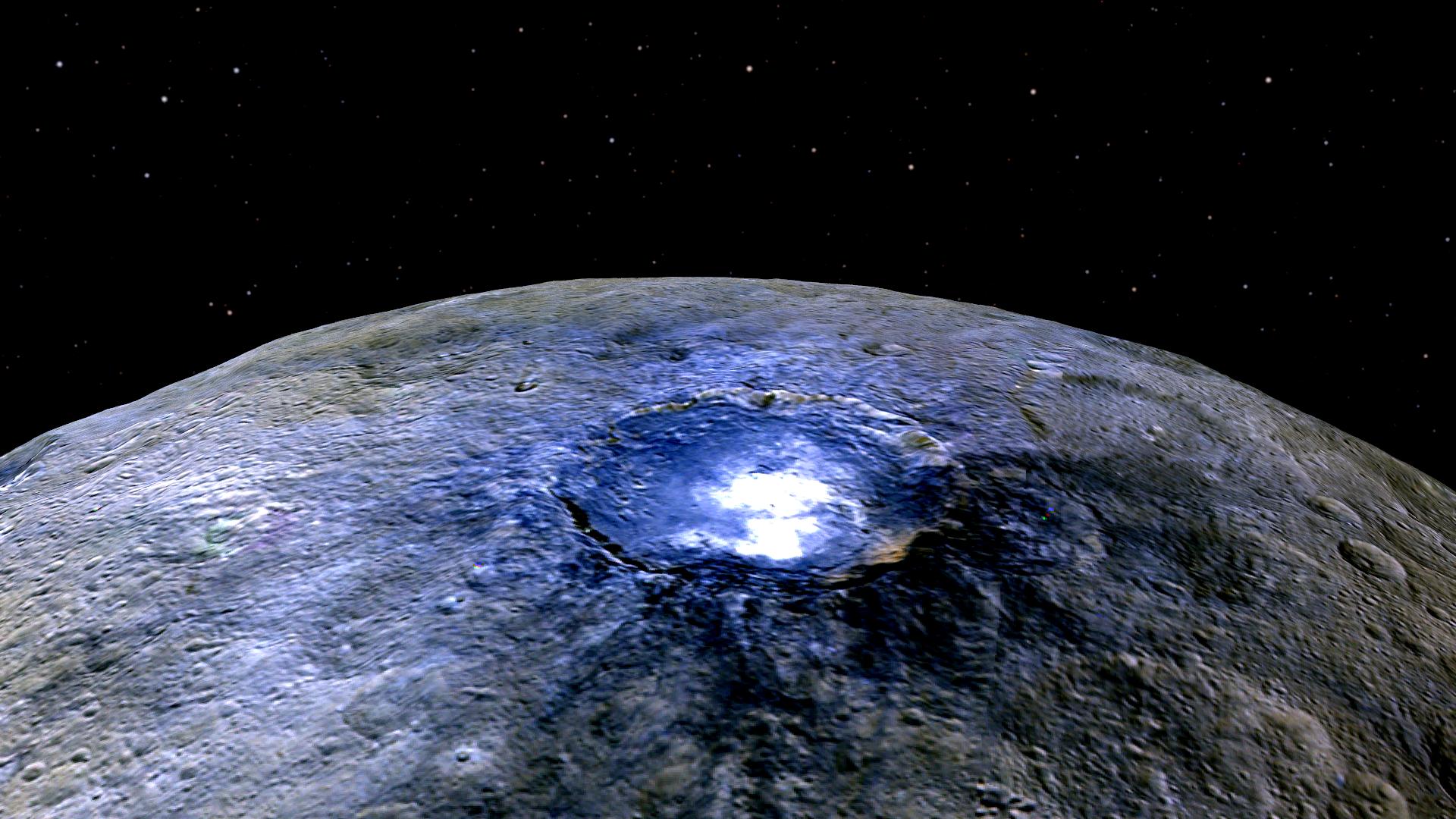
Copyright:
原文:
Dwarf planet Ceres is the largest object in the Solar System’s main asteroid belt with a diameter of about 950 kilometers. Exploring Ceres from orbit since March, the Dawn spacecraft’s camera has revealed about 130 or so mysterious bright spots, mostly associated with impact craters scattered around the small world’s otherwise dark surface. The brightest one is near the center of the 90 kilometer wide Occator Crater, seen in this dramatic false color view combining near-infrared and visible light image data. A study now finds the bright spot’s reflected light properties are probably most consistent with a type of magnesium sulfate called hexahydrite. Of course, magnesium sulfate is also known to Earth dwellers as epsom salt. Haze reported inside Occator also suggests the salty material could be left over as a mix of salt and water-ice sublimates on the surface. Since impacts would have exposed the material, Ceres’ numerous and widely scattered bright spots may indicate the presence of a subsurface shell of ice-salt mix. In mid-December, Dawn will begin taking observations from its closest Ceres mapping orbit.
中文翻譯:
🌌 探索矮行星 Ceres!這個位於太陽系主小行星帶的最大天體,直徑約有950公里。自三月以來,Dawn 探測器的相機揭示了約130個神秘的明亮點,這些點多與小行星表面上的撞擊 crater 相關。
✨ 最明亮的亮點位於直徑90公里的 Occator Crater 中心,這張引人注目的假色圖像結合了近紅外和可見光影像數據。一項研究發現,這些明亮點的反射光特性最有可能與一種名為六水鎂硫酸鹽的化合物一致。對於地球人來說,鎂硫酸鹽就是我們熟知的 Epsom salts。
💧 在 Occator 裡報告的霧氣也暗示,這種鹽類材料可能是隨著表面水冰升華所留下的混合物。由於撞擊暴露了這些材料,Ceres 上眾多且廣泛分佈的明亮點可能指示著存在一層冰鹽混合物的地下殼層。
🚀 在12月中,Dawn 將開始從其最接近 Ceres 的映射軌道進行觀測,期待更多驚喜!
#Ceres #DawnMission #OccatorCrater #SpaceExploration #EpsomSalt #AsteroidBelt #PlanetaryScience #NASA #Astronomy #SpaceDiscovery
來源:NASA每日圖片


